Breeding company Bayer updated the industry on new varieties and breeding strategies at the customer day at their Experience Center in Bleiswijk, Netherlands, earlier this month. There was, of course, much attention on ToBRFV, and how Bayer is bringing durable resistance to its De Ruiter portfolio.
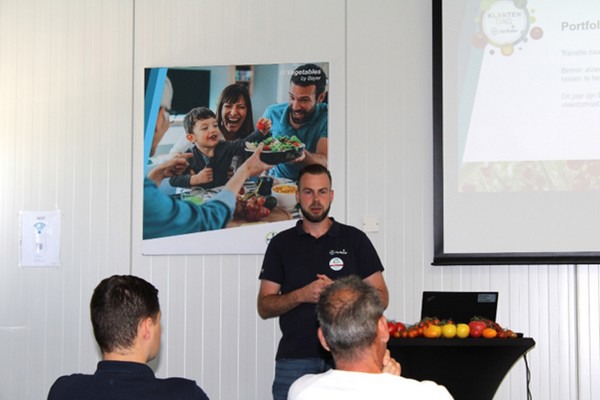
For instance, Jari Boerboom, Market Development Representative, talked about stacking multiple ToBRFV resistance genes. "This way you achieve a durable resistance that is difficult to break through by the virus." At Bayer De Ruiter's quarantine greenhouse in Wageningen, trials are being conducted in this area. Several genes have been selected for continued work towards resistant varieties that can be marketed soon in all segments.
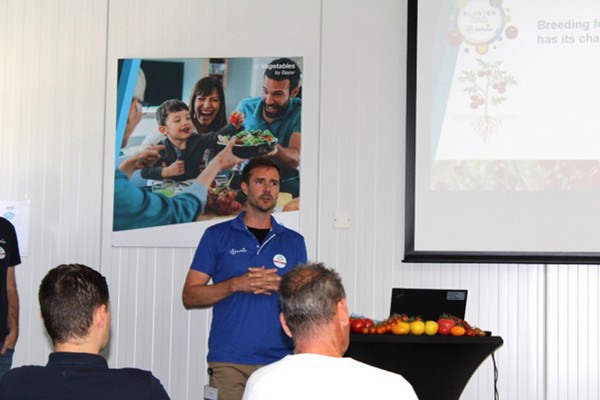
Ben Hunter gave an insight into the future of breeding tomatoes with better nutritional value. Ben is a Trait Discovery researcher. He first took us briefly through his metaphor. He compares breeding to solving the Rubik's Cube: you have to make many turns to solve it. And then if a square was turned correctly, elsewhere others would be staggered so you have to keep turning until you have solved it. Gene editing technology has the potential to change the way we solve the cube.
Back to Rubiks; you can essentially paint the squares to color you need. Turning is no longer necessary and you arrive at the solution faster and more precisely. To apply the method of gene editing in tomatoes, they are working on a tomato with extra vitamin D. Ben: "What do you think? Would there be interest in a tomato with extra vitamin D? I see a lot of people, including myself, taking supplemental vitamin D."
Many questions followed Ben's presentation. One was about the link between gene editing and genetic modification. Ben highlighted that the two are really about different breeding strategies and outcomes.
Resistant rootstock
Jan Barten, Strategic Project Leader of ToBRFV, elaborated on the topic of stacking resistance ToBRFV genes. The film he showed illustrated his story. The film footage had been shot in the quarantine greenhouse in Wageningen. Leaf and fruit symptoms of infected plants are closely monitored after inoculation.
Incidentally, Wageningen is also where the research on the importance of ToBRFV resistance of rootstocks was conducted. "No significant evidence was found that rootstock resistance contributes to crop resistance," Jan reiterated the breeding company's statement. "This applies to both leaf and fruit symptoms."
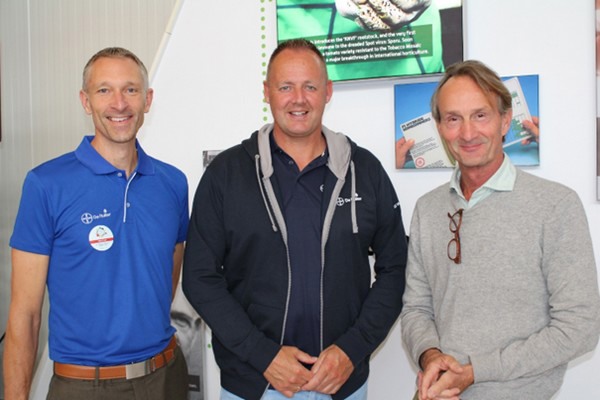 Ethan Luth, Duco de Ruiter and Jan Kamper, Bayer De Ruiter. View the photo report of the day here.
Ethan Luth, Duco de Ruiter and Jan Kamper, Bayer De Ruiter. View the photo report of the day here.
Jan Kamper, Bayer De Ruiter, later informed us that there are ToBRFV-resistant rootstocks in the pipeline with them, though. Jan: "You have to imagine that the whole breeding process is a project for years. Of course, we started working on that too. In retrospect, it turns out that it was unnecessary. The importance of a rootstock is really more in things like endurance, generativity, and planting balance. That's one of the conclusions of the long-term research we did in Wageningen."
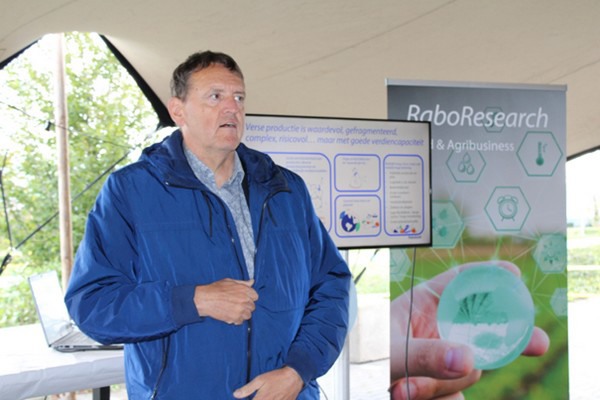
Sickbay
Lambert van Horen, Sector Manager at RaboResearch Food & Agri, updated us on market trends and developments. He is happy to see greenhouse horticulture performing well: "There are few companies in our sickbay (read: under Special Management). Returns have been reasonably high again in recent years."
Nevertheless, the sector faces several challenges. Regulation and environmental rules require attention. Just think of the upcoming Water Framework Directive (WFD) and CSRD. CSRD stands for Corporate Sustainability Reporting Directive. This directive is part of the 'EU Green Deal', and aims to create more transparency about the sustainability performance of organisations. With this new directive, the European Union requires (large) companies to report on their sustainability performance, strategy, and policy in the annual report. For all (large) companies in the Netherlands, this is going to lead to a major change in business practices.
He does note supermarkets' concerns about the supply of AGF shelves. It will change the role of the trade, as supermarket demand is anticipated. You see both semi-forward and semi-backward integration. The superlative step would be a highly integrated chain. We are not that far yet, even though he wonders whether the latter is at all feasible and desirable.
After this, the floor was given to Annemiek van Vleuten. This top athlete was a professional cyclist. She took us through her sporting experiences.
Finally, it was the turn of chef Joey de Vries. Joey de Vries is a driven chef with a passion for cooking. Yesterday, he brought the experience of a starred restaurant to the De Ruiter Experience Center.
View the photo report of the day here.
For more information: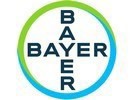
Bayer Vegetable Seeds
www.vegetables.bayer.com
